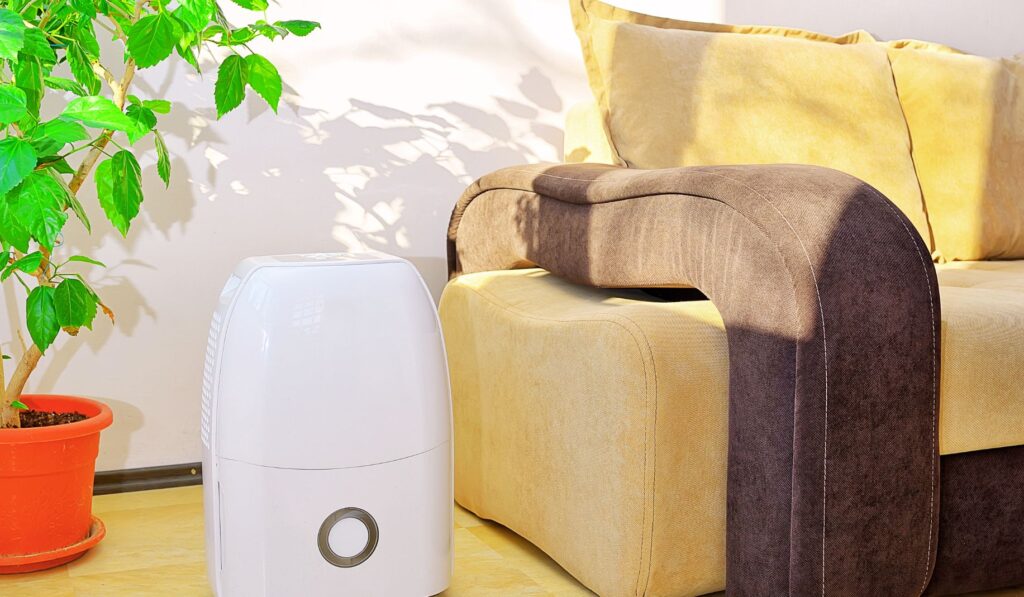
To stop your room from being damp, start by ensuring proper ventilation. Open windows regularly to allow fresh air to circulate, and if possible, use extractor fans, especially in areas prone to moisture like bathrooms and kitchens.
Next, address any potential sources of moisture. Check for leaks in pipes, the roof, or windows and repair them promptly. Additionally, using a dehumidifier can help reduce excess moisture in the air.
Consider improving insulation in your room, as this can prevent condensation on walls. Also, avoid drying clothes indoors, as this adds to the humidity levels.
Excess moisture not only fosters mould growth but also contributes to musty odours and deterioration over time. Given the UK’s damp and unpredictable climate, it’s crucial to take proactive measures. In this guide, we offer eight affordable and practical strategies for damp proofing your rooms.
Recent studies reveal that over 60% of homes in the UK suffer from damp-related problems, highlighting a widespread issue that can lead to health complications and structural damage.
From simple DIY fixes to more comprehensive solutions, we’ll show you how to maintain a dry, healthy, and comfortable living environment. Dive into our tips and transform your home into a cosy sanctuary, free from the troubles of damp.
1. Identify the Source of Damp
The first step is to find out where the moisture is coming from. There are several common sources of damp in homes:
- Condensation: This occurs when warm, moist air comes into contact with cooler surfaces, forming water droplets. It’s most common in kitchens, bathrooms, and bedrooms.
- Penetrating Damp: Caused by water leaking through walls. This can happen due to structural problems, such as faulty roofing or guttering.
- Rising Damp: This is less common but occurs when water from the ground rises up through the walls due to capillary action.
2. Fix Structural Issues in Home
If your damp issues stem from structural defects, it’s essential to address these problems first. This might mean repairing or replacing damaged roofing, fixing leaking pipes, or ensuring that guttering and downpipes are clear and functioning properly.
For rising damp, a damp-proof course (DPC) might need to be installed by professionals. This is a barrier in the wall that prevents moisture from rising up from the ground.
Worth reading: Why Do My Walls Get Damp After Rain?
3. Improve Ventilation of Your Room
Good ventilation is key to preventing condensation. Here are a few ways to improve airflow in your home:
- Open Windows: Regularly opening windows, especially after cooking, bathing, or showering, helps to let moist air out.
- Use Extractor Fans: Installing extractor fans in kitchens and bathrooms can effectively remove moist air from these high-humidity areas.
- Avoid Drying Clothes Indoors: If possible, dry clothes outside. If you have to dry clothes indoors, do so in a well-ventilated room or use a dehumidifier to control moisture levels.
4. Use a Dehumidifier in the Room

A dehumidifier can be a great investment to reduce indoor humidity levels. These devices draw in air, remove the moisture, and then release the dry air back into the room. Using a dehumidifier in particularly damp-prone areas of your home can significantly reduce the risk of mould and mildew development.
In choosing the right dehumidifier for a room, especially in damp-prone areas, you’ll mainly find two types: refrigerant and desiccant. Refrigerant models are ideal for warmer settings, working by cooling the air to condense and remove moisture. These are well-suited to many UK homes, effective in spaces that stay warm.
Desiccant dehumidifiers, on the other hand, excel in cooler conditions, using a moisture-absorbing material to dry the air. They’re particularly good for colder parts of the house or during the winter months, offering reliable performance when it’s chilly. Your choice between these should reflect the room’s typical temperature and humidity levels.
5. Apply Damp-Proof Paint
In the UK, where damp walls can be a common issue due to the wet climate, applying damp-proof paint offers a practical solution. This type of paint forms a protective barrier against moisture, making it ideal for rooms prone to condensation, like kitchens and bathrooms. Before starting, it’s essential to have the wall surface clean and dry for the paint to stick well and work effectively.
When applying damp-proof paint, a thorough preparation of the wall surface is key. Clean off any dirt and treat areas affected by mould before painting.
Applying the paint in at least two coats ensures a solid moisture barrier, keeping your home dry and comfortable. You can also read our guide on How to Dry Damp Walls?
6. Re-plastering
In cases where damp has caused significant damage to plasterwork, it may be necessary to re-plaster the affected areas using a damp-proof plaster. This type of plaster is designed to resist moisture and can provide an effective long-term solution to damp problems.
7. Maintain Your Home
Regular maintenance is vital to keeping damp at bay:
- Check for Leaks: Regularly inspect pipes, roofs, and windows for signs of leaks and fix any issues promptly.
- Clear Gutters: Ensure that gutters and downpipes are free from blockages to prevent water from spilling over and penetrating the walls.
- Prune Plants: Keep plants and shrubs trimmed back from the exterior of your house to allow walls to dry more quickly after rain.
8. Seek Professional Help
If you’re struggling to identify the source of damp or the problem persists despite your efforts, it might be time to call in the experts. Professional damp proofing companies can carry out a thorough assessment and recommend the most effective treatments, which might include installing new damp-proof courses or undertaking more extensive structural repairs.
Damp proofing your home is about taking a proactive approach to moisture control. By identifying the sources of damp, addressing any structural issues, improving ventilation, and taking preventative measures like using dehumidifiers and damp-proof paints, you can protect your home from the damage and health issues associated with excess moisture.
Remember, the key is to act quickly at the first sign of damp to prevent more serious problems down the line.
About Us
Damp2Dry Solutions conducts comprehensive damp surveys for residential and commercial properties in the region.
With over 30 years of experience in damp treatment, Damp2Dry Solutions provides a 20-year guarantee for all our work. Our specialized surveys identify damp type, source, and scale, allowing us to apply the most suitable treatment. We focus on thorough damp elimination and prevention.
Our service area includes Manchester, Liverpool & Merseyside, Stoke-on-Trent, and South Yorkshire. Our Cheshire-based office supports these regions. An impressive 98% of our customers highly recommend us for damp-proofing expertise. For trusted damp removal and prevention, contact the Damp2Dry Solutions Damp Proofing team today.

